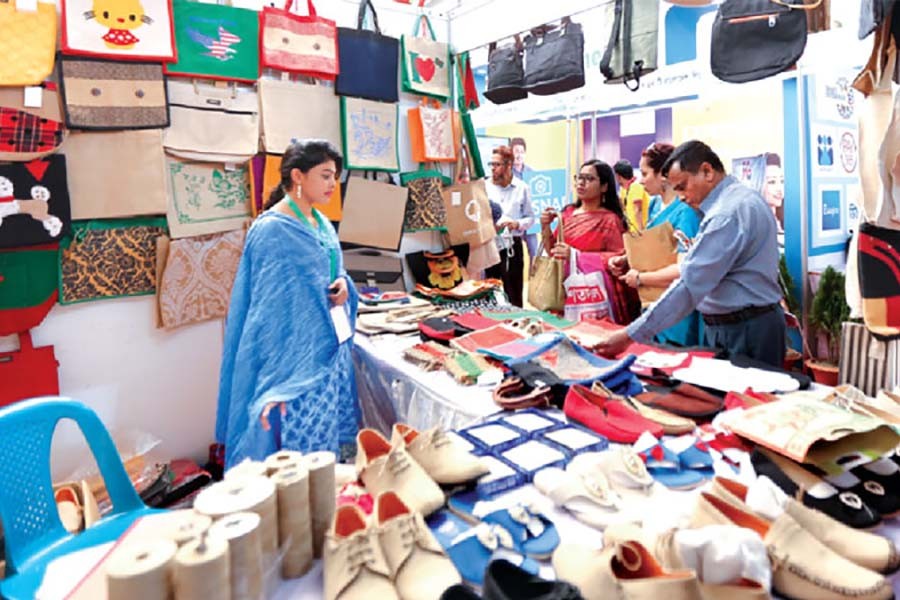As Eid-ul-Fitr festival draws near, the sectors producing items associated with its celebration begin humming with hectic activities. They bring to the Eid market myriad types of consumer goods. Saris, panjabis, shirts and trousers, children's dresses and footwear dominate the list. It also includes trinkets, caps, prayer mats, and, most noticeably, ingredients required for preparing the festival dishes. This has been seen in the recent past; it is also no exception this year. The year's Eid market has already started presenting a fast unfolding spectacle -- focused on the micro entrepreneurs engaged in producing festival items, along with the larger ones. Compared to their past struggling phase, the picture, undeniably, is upbeat. Targeting mainly the lower middle class segment in society, these micro-level and small and medium ventures go through a burst of activity in the run-up to Eid.
These apparently humble units have been a part of manufacturing and trading as well as business activities across the country for nearly a couple of decades. Their steadily increasing contribution to the national economy, especially on the eve of the annual festivals, has earned recognition. Thus it has naturally prompted the government and a few non-governmental organisations (NGOs) and private institutions to arrange financial boost aimed at helping them thrive. Commensurate with the country's essentially rural nature, the presence of these small and micro-level business units appears normal. With their clientele being chiefly based in the nearby and faraway urban centres, demands for their hand-made and mini-factory products continue to rise. Thanks to this encouraging development, the successful 'micro-entrepreneurs' have been able to carve for themselves a noticeable place in the nation's business arena. Apart from creating fresh entrepreneurship, the small production units have opened employment opportunities for people in the areas plagued by joblessness. Besides intrepid women's increasing presence in micro-entrepreneurship, the number of female workers engaged in these units continues to rise. This has begun having a positive impact on the rural employment scenario and also that found on the urban fringes.
The Eid market of various consumer products in the country has been getting wider with every passing year. Thanks to a remarkable increase in people's purchasing capacity, the festival market nowadays undergoes spells of vibrancy. Sales bonanza on the part of the big city-based businesses has been a normal feature in the recent years. Compared to this spectacle, many micro-level and small and medium enterprises in areas continue to struggle for survival.
The imperative of helping these ventures grow in the expected buoyancy is backed by strong reasons. Though minimal, their contribution to the national economy cannot be underrated. Moreover, the success of these outlying production and trading units is inherently related to social uplift. Except a few, these entrepreneurs in general are not in good shape. What besets them most is the dearth of adequate capital. According to a United Nations Capital Development Fund (UNCDF) study, the country has over 1.1 million 'micro-merchants'. To be in trade they need credit worth $6.0b annually. In the traditional production-related sector, inadequate capital remains a major hurdle to investment in big volume in micro-enterprises. This drawback besets the Jamdani sari weavers in Narsingdi or the rural shoe-makers in Rajshahi villages. Encouragingly, the Small and Medium Enterprises Foundation (SMEF) in Rajshahi has come forward to stand by the shoe manufacturers with financial help. Many others are not so fortunate, although they deserve institutionally generated financial supports -- especially on the occasion of Eid. Enterprises cannot remain in makeshift stage for long.


